NHS Resolution’s Early Notification scheme: learning from avoidable brain injuries at birth
NHS Resolution launched the flagship Early Notification (EN) scheme on 1 April 2017, as part of a drive to improve maternity and neonatal services nationally. A key ambition of the EN scheme has been to shorten the time taken to report an incident to NHS Resolution from years to days, enabling early admissions of liability where appropriate with early support to be provided to families when they need it most and earlier learning for the maternity system. This article describes the process and progress of this innovative scheme for cases reported in year one with a summary of NHS Resolution’s recently published report on the EN scheme, including valuable learning and recommendations for all levels of maternity and neonatal services from policy-makers to clinical teams.
Samantha Steele
Obstetrician and National Obstetric Clinical Fellow at NHS Resolution,
samantha.steele@resolution.nhs.uk
Annette Anderson
Midwife and Head of the Early Notification scheme (Clinical),
annette.anderson@resolution.nhs.uk
The EN scheme is a national programme for the early reporting to NHS Resolution of infants born with a potentially severe brain injury following term labour. It aims to support the stated government priorities to halve the rate of neonatal brain injuries, and improve the safety of maternity care while also responding to the needs of families where clinical negligence is identified, including through the early admission of liability where appropriate. The scheme uses the expertise of NHS Resolution in clinical negligence claims handling to proactively assess the legal risk and investigate care, and to provide early support to families where liability is established. Furthermore, the scheme aims to improve the experience for NHS staff by time-limiting their involvement in the legal process and rapidly sharing learning from avoidable harm. In September 2019, NHS Resolution published a report on the progress of the scheme including an analysis of the investigation and clinical themes evident in a cohort of high risk cases from year one: The Early Notification scheme progress report: collaboration and improved experience for families.1
Previously, the average length of time between an incident occurring and an award for compensation being made was 11.5 years, with claims often not notified to NHS Resolution until four to five years after the incident and compensation provided when the full extent of injuries were apparent. During the first year of the scheme (1 April 2017 to 31 March 2018) 24 families had received an admission of liability, a formal apology and, in some cases, financial assistance with the care of their child and other needs within 18 months of the incident. This short duration is unprecedented for claims related to brain injury and/or cerebral palsy.
All NHS trusts in England are members of and contribute to NHS Resolution’s indemnity scheme, the Clinical Negligence Scheme for Trusts. The cost of clinical negligence claims is rising at a faster rate than year-on-year NHS funding. Maternity claims for severe brain injuries at birth due to negligent care are the largest single contributor to the incurred cost of harm, the annual collect from trusts to pay claims and also the provision held in the government accounts for clinical negligence. The value of these claims and the level of compensation awarded reflect the complex and long-term care needs of affected babies (FIGURES 1 and 2).
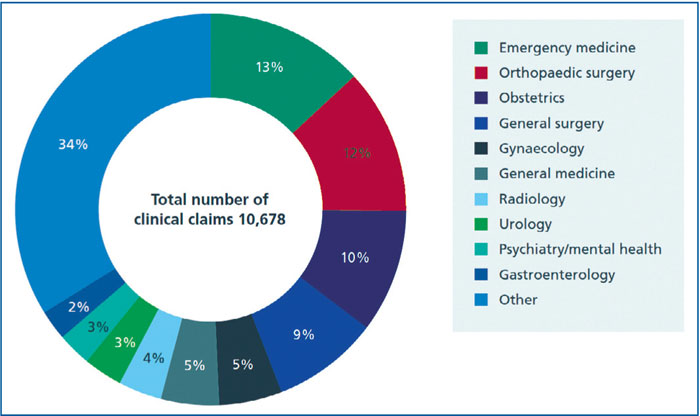
FIGURE 1 The number of claims received in 2018/19 by specialty.2 Source: NHS Resolution Annual Report and Accounts 2018/19.
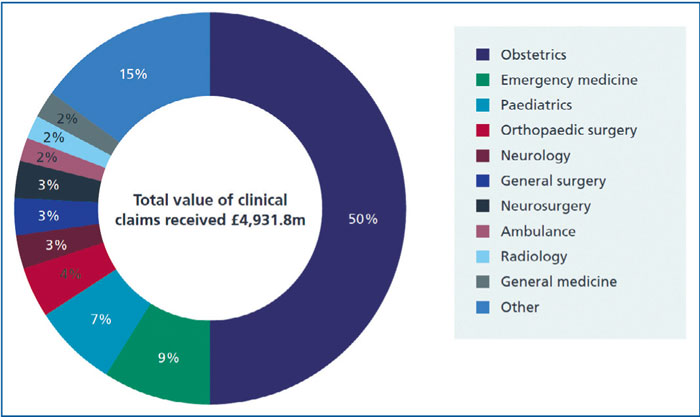
FIGURE 2 The value of clinical negligence claims received in 2018/19 by specialty.2 Source: NHS Resolution Annual Report and Accounts 2018/19.
NHS Resolution’s primary focus is to resolve concerns fairly as well as share learning for improvement and preserve resources for patient care. Health care in the NHS is generally very safe but when things do go wrong, it is important that those involved are properly informed and supported, compensation is paid fairly, unnecessary costs are contained and that learning takes place in order to improve. NHS Resolution is uniquely placed to manage this process, improve patient safety and work across systems to drive improvement.
From 1 April 2017, acute maternity trusts have been required to notify NHS Resolution within 30 days of all babies born at term (≥37 completed weeks of gestation), that have had a potentially severe brain injury diagnosed in the first seven days of life, based on the following criteria:
- have been diagnosed with grade III hypoxic ischaemic encephalopathy (HIE); or
- were actively therapeutically cooled; or
- had decreased central tone and were comatose and had seizures of any kind.
These criteria align with the Royal College of Obstetricians and Gynaecologists’ Each Baby Counts (EBC) programme.3 Babies who meet the criteria above are at relatively high risk of being diagnosed with a long-term brain injury or disability in the future (eg cerebral palsy), and furthermore the EBC programme has identified potentially avoidable harm in 71-76% of cases.4,5 Although this does not directly equate to legal liability, it is associated with potential litigation risk and a high claim value.
The EN scheme in practice
The EN scheme has fundamentally changed how these very serious events are handled when it comes to the assessment of legal liability and compensation. For the first time, cases are triaged by both legal and clinical experts in-house at NHS Resolution at an early stage.
The EN team integrates legal case managers working alongside a clinical team of midwives and obstetricians to facilitate robust triage and analysis of reported cases with the opportunity to feedback learning to trusts earlier, as well as an opportunity to understand local and national maternity safety concerns.
Cases are processed based on the liability risk assessment provided by the trust at the point of notification. In addition to this trusts are asked to provide, in a secure format, a copy of the relevant maternal and neonatal medical records and any investigation documents when available. Reporting is cross-referenced with data extracts of qualifying babies provided by the National Neonatal Research Database so that notifications can be checked and any missing cases identified. This is also the route by which EN cases are externally verified for the benefit of NHS Resolution’s maternity incentive scheme.6
For cases risk-assessed by trusts as ‘likely’ substandard care, panel solicitors are instructed directly by NHS Resolution to begin a liability investigation on behalf of the trust.
Cases reported to NHS Resolution with ‘possible’ or ‘unlikely’ substandard care risk assessments are triaged internally at NHS Resolution by legal case managers and clinical advisors to determine the risk of legal liability. FIGURE 3 sets out typical handling of a case once reported to NHS Resolution.
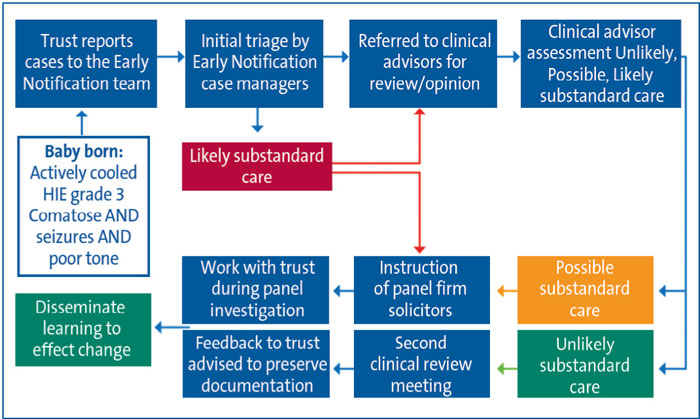
FIGURE 3 Flowchart of typical EN case handling according to risk assessment. Source: The Early Notification scheme progress report: collaboration and improved experience for families.
Where an incident is considered by the reporting NHS trust to be ‘unlikely’ to be related to substandard care and the EN triage concurs, feedback is provided to the trust. The trust legal team is advised to preserve relevant records, statements, investigation documents and contemporary guidance as the process does not necessarily prevent a claim being brought by a family at a later date.
Once liability investigations are concluded at NHS Resolution, families are provided with details of the outcome. This is usually through the trust legal service, supported by panel solicitors and NHS Resolution. Where relevant this will include informing families candidly where care has fallen below a reasonable standard and legal liability admitted.
Where the investigation concludes that the care provided was reasonable, NHS Resolution explains the findings to the trust and families, who are also advised that they can access independent advice and support. Families are also signposted to Action Against Medical Accidents (AvMA), a charity focusing on supporting those affected by avoidable harm in health care. Self-help guides are available on its website, including a specific guide for birth injuries.7
Investigative and clinical analysis
The recently published report includes an analysis of investigation and clinical themes from a cohort of 96 EN cases reported in year one of the scheme that were triaged as high risk for litigation. FIGURE 4 outlines the total number of cases reported in that year and describes the number of cases reviewed at the time of writing the EN report.
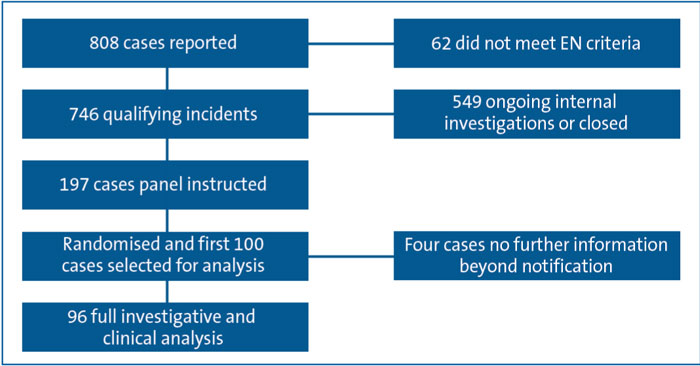
FIGURE 4 Number of EN cases reported in year one and progress.
Common themes around the investigation process in the 96 cases included limited support to staff involved, a lack of family involvement in investigation process, and confusion over duty of candour.
Contributing clinical factors were varied and multifactorial. In 70% of cases problems with fetal monitoring were identified, in 63% at least two or more factors were identified in this area alone, with delay in acting on pathological or abnormal cardiotocography being the most common.
Other important or novel clinical themes included problems with immediate neonatal care and/or resuscitation that contributed to the outcome in 32% of cases; impacted fetal head and difficult delivery at caesarean section (9%) and concurrent maternal medical emergencies in labour including significant maternal hyponatraemia contributing to neonatal seizures. Full details of the analysis including antenatal and birth demographics can be found in the report here
As a result of the in-depth analysis, and following discussion and work with key stakeholders, six recommendations were made. These are summarised in FIGURE 5 but are described in detail within the report, including work that can be undertaken at a local and national level to address the recommendations.
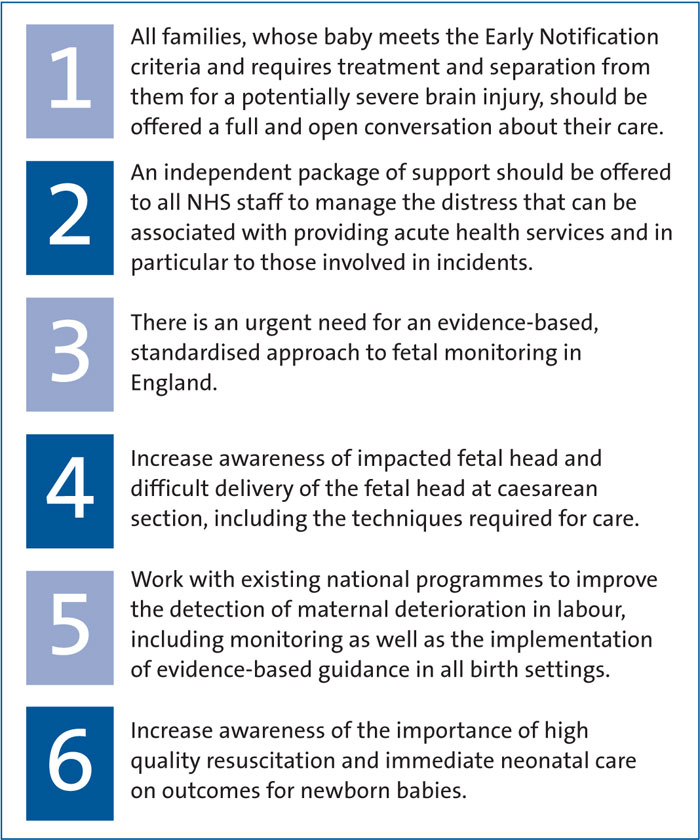
FIGURE 5 Recommendations from the EN report.1
Conclusion
The EN team at NHS Resolution will continue to work across the system, collaborating with other national NHS bodies, the royal colleges, user groups, charities and NHS trusts in England to share learning from EN cases. In addition, we will continue to work closely with key stakeholders to reduce the burden of reporting incidents.
NHS Resolution is also committed to developing existing databases and governance processes so that we can work with academic partners to improve the access to and quality of claims data for learning. Finally, NHS Resolution will continue to drive timely and early resolution of cases to benefit both families and staff, translate our data into information for the wider NHS and incentivise providers to deliver safe maternity and neonatal services.
The full report with acknowledgments is available on the NHS Resolution website at www.resolution.nhs.uk
Or read this article in our
Tablet/iPad edition


